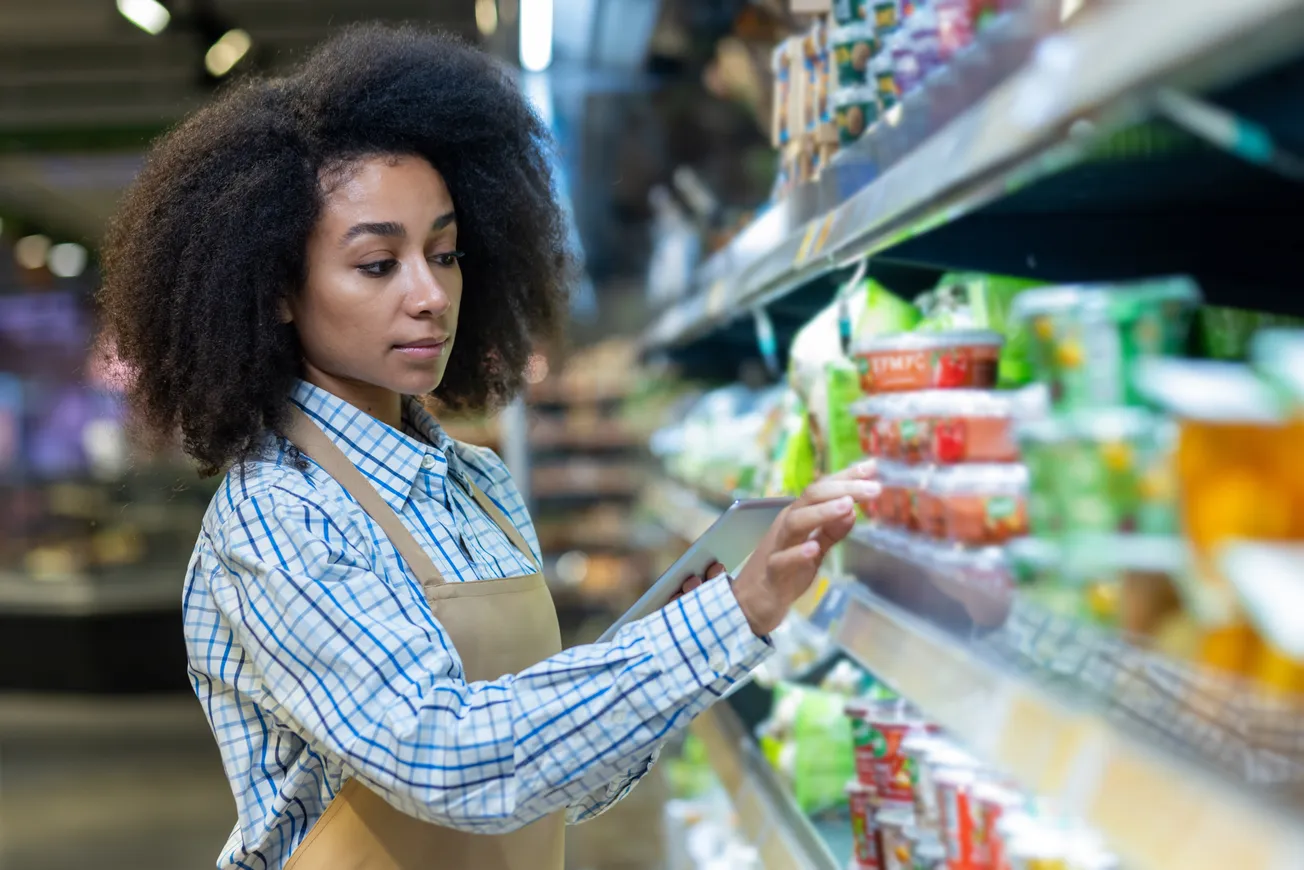As we move deeper into 2025, grocery store design is no longer just about shelving and checkouts, but it’s about integrating technology, sustainability, flexibility and personalized experience into every shopper interaction. Retailers are evolving store layouts to meet omnichannel expectations and optimize both human and digital channels.
1. Tech-Driven, Checkout-Free Environments
AI and cashierless technology are transforming stores this year. Chains like Wegmans are piloting Instacart’s Caper carts – smart carts equipped with cameras, scales and in-cart checkout screens that allow customers to monitor spending and exit without traditional queues.
Meanwhile, cashierless formats combining computer vision, weight sensing and RFID are expanding globally, though some early experiments (e.g. Amazon Just Walk Out) have faced challenges that underscore the importance of robust implementation.
2. Dynamic Pricing & Smart Tags
Electronic shelf labels (ESLs) with dynamic pricing are gaining traction. In Norway, chains like REMA 1000 update prices up to 100 times daily for peak efficiency, while U.S. retailers are beginning pilot programs, raising consumer debate over surge-like tactics. These labels also enhance promotional agility and labor efficiency in fast-moving grocery environments.
3. Modular Layouts & Small-Format Formats
Stores are embracing adaptive or modular layouts that flexibly accommodate trends like meal kits, local events or pop-up showcases. This format encourages engagement while improving traffic flow and operational adaptability.
Meanwhile, smaller urban formats such as Whole Foods’ Daily Shop concept in Manhattan offer convenience to frequent fill-in shoppers but pose logistics challenges. These micro-stores emphasize speed, fresh products and proximity.
4. Sustainability at the Core
Eco-conscious design is now mainstream in grocery: expect energy-efficient LED lighting, natural refrigeration systems, reduced packaging waste and incorporation of recycled materials throughout store fixtures. Such features promote brand values and operational savings.
5. Omnichannel Synergy & Fulfillment Zones
The front-end experience is being redesigned around a hybrid retail model. Many grocers repurpose back-of-store areas into micro-fulfillment centers or dedicated pick zones for online orders, while keeping the retail front open for local in-store shoppers. This model supports rapid delivery without undermining the in-store experience.
6. Personalization & Spatial Analytics
AI is powering more than just automation. Retailers like Lowe’s use tools like digital twins and spatial analytics to analyze shopper movement and tailor product placement dynamically. This enables more intuitive store layouts. For example, adjusting displays based on local trends or social media sentiment. In digital grocery, recommendation engines based on top‑N personalization help reduce search friction and increase basket size—a principle that physical stores increasingly emulate.
Redesigning grocery stores for 2025 involves a multifaceted approach: blending automation with human touch, embedding sustainability and aligning the physical footprint with online fulfillment. Leading grocers will likely rely on modular layouts, smart tech like Caper carts and ESLs and deep localization to maintain relevance and drive loyalty.







